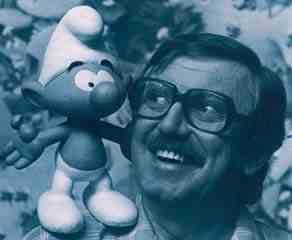Belgium has been a center for visual arts for many
centuries, especially for painters. Some cities, like Antwerp and Brussels, are
well-known meccas for painters and artists. One painter, James Ensor, was
instrumental in the expressionism and surrealism movements. Ensor painted
“Christ’s Entry into Brussels” (1889) which received a lot of bad publicity and
subsequently was banned in many areas because of its scandalous overtones.
However, its current home is in Los Angeles, California at the Getty Center. Despite
being quite famous, Ensor didn't really leave Belgium, even during WWII, except
for a few short trips to Paris, London, and the Netherlands. He remained in his
hometown of Ostend and his daily walks around town were famous as well.
There are several famous art museums that house large
collections of other famous Belgian painters, for example The Royal Museum of
Fine Arts in Antwerp houses a large collection of works by Peter Paul Rubens,
and there is a large René Magritte collection at the Royal Museum of Fine Arts of
Belgium in Brussels.
Belgian literature is divided into two categories: Flemish
literature and French literature. There
are also a few writers who write in the Walloon language (which is related to
French, though it has so few speakers now, it’s almost feared it will become a
dead language in the future). Until this past century, most Belgian writers
wrote in French, even if they actually spoke Dutch. French at one time was used
as a language for royalty and the courts, and it still carries a quasi-lingua
franca status. (That’s one reason why you’ll notice that everything is also
translated into French at the Olympics.) Some of the major authors are Tom
Lanoye, Dimitri Verhulst, Thomas Gunzig, Juan d’Oultremont, Jacques Mercier,
Nicolas Defrecheux, Edouard Remouchamps.
One thing that Belgium also does well is comics. You are
probably aware of some of their work without even knowing that you knew. One of
the most well-known cartoonists is Peyo (pen name of Pierre Culliford), best
known for The Smurfs. (If you watch the new Smurfs movie that came out in 2011,
there’s a scene where one of the Smurfs opens a book, and it has Peyo’s name on
it.) The original was first published in
October 23, 1958.
Another famous cartoonist is Hergé (pen name for Georges Prosper Remi),
best known for The Adventures of Tintin. The amazing thing is that he wrote and
illustrated the comic from its inception in 1929 all the way until he died in
1983. I love Tintin, and I got my kids into it as well. There are some episodes
available on Netflix streaming. Ironically, they also remade a movie about Tintin in 2011 as well. It was apparently the year for Belgian comics.
Up next: Music and Dance


No comments:
Post a Comment